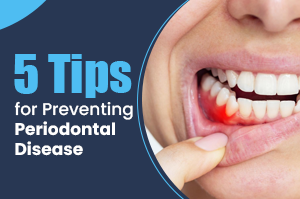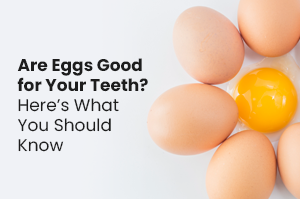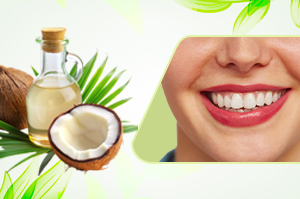Healthy gums are the cornerstone of a vibrant smile and overall well‑being. While daily brushing and flossing form the foundation of gum care, your diet plays a pivotal role in supporting gum health from the inside out. The foods you choose can either nourish your gum tissue, bolster your body’s defences against infection, and promote tissue repair, or fuel inflammation and bacterial growth. In this blog, we’ll explore the top five foods for healthy gums, explain what gum disease is, outline practical strategies to prevent and treat it, and highlight the worst foods you should limit for optimal oral health.
What Is Gum Disease?
Gum disease, also known as periodontal disease, is an infection of the tissues surrounding your teeth. It begins with gingivitis, characterized by red, swollen gums that bleed easily when you brush or floss. Without intervention, gingivitis can progress to periodontitis, where deeper pockets form between the gum and tooth, allowing bacteria to thrive and destroy bone and connective tissue. Advanced periodontitis can lead to loose teeth, receding gums, and even tooth loss. In Canada, nearly half of adults over 30 show signs of gum disease, making prevention and early treatment essential for maintaining oral and systemic health.
Top 5 Foods for Healthy Gums
1. Crunchy Fruits and Vegetables: Apples, Carrots, and Celery
Crunchy produce acts like a natural toothbrush, stimulating gums and helping to dislodge plaque. Apples, carrots, and celery have a high water content that dilutes sugars and acids, while their fibrous texture gently scrubs tooth and gum surfaces. Carrots are rich in beta‑carotene, which your body converts into vitamin A, a nutrient essential for maintaining healthy mucous membranes, including your gums. Celery contains apigenin, a compound shown to reduce inflammation. Aim to include a serving of crunchy fruits or vegetables in your diet daily to boost mechanical plaque removal and nutrient intake.
2. Leafy Greens: Spinach, Kale, and Swiss Chard
Leafy greens are nutritional powerhouses loaded with vitamins, minerals, and antioxidants that support gum health. Vitamin C, abundant in spinach and kale, plays a critical role in collagen synthesis—collagen being the protein that gives gum tissue its strength and resilience. Folate (vitamin B9), found in spinach and Swiss chard, helps your body repair damaged gum tissue and reduces inflammation. Moreover, these greens are low in calories and sugar, making them ideal for promoting a balanced oral microbiome. Incorporate a variety of leafy greens into salads, smoothies, or as lightly steamed side dishes.
3. Dairy Products: Yogurt, Cheese, and Milk
Dairy products are excellent sources of calcium, phosphorus, and casein, all of which contribute to stronger teeth and healthier gums. Calcium and phosphate help remineralize enamel, making it more resistant to decay and reducing the bacterial acids that irritate gums. Casein—a milk protein—forms a protective film on teeth, further safeguarding against harmful bacteria. Unsweetened yogurt also provides probiotics, beneficial bacteria that can crowd out periodontal pathogens. Opt for plain, low‑fat or Greek yogurt and natural cheeses, and enjoy a small serving after meals to help neutralize oral acids and promote gum healing.
Also read: The Benefits of Dental Fillings
4. Fatty Fish: Salmon, Mackerel, and Sardines
Fatty fish such as salmon, mackerel, and sardines are rich in omega‑3 fatty acids, known for their potent anti‑inflammatory properties. Inflammation is a key driver of gum disease; by reducing inflammatory cytokines, omega‑3s help modulate the immune response and protect gum tissue from destructive processes. Additionally, fatty fish provide vitamin D, which enhances calcium absorption, critical for both bone and gum health. Aim for at least two servings of fatty fish per week, grilled or baked to preserve nutrients, and consider pairing with leafy greens for a nutrient‑packed meal that supports periodontal wellness.
5. Nuts and Seeds: Almonds, Walnuts, and Chia Seeds
Nuts and seeds are convenient, nutrient‑dense snacks that deliver healthy fats, protein, and minerals. Vitamin E, abundant in almonds and sunflower seeds, functions as an antioxidant in the gum tissue, helping to repair and protect cell membranes. Magnesium, found in cashews and pumpkin seeds, supports bone health and aids in controlling inflammation. Chia and flax seeds contribute omega‑3 alpha‑linolenic acid for additional anti‑inflammatory benefits. Incorporate a handful of mixed nuts or a tablespoon of seeds into your breakfast cereal, yogurt, or salads to boost your daily intake of gum‑friendly nutrients.
How to Prevent and Treat Gum Disease
- Daily Oral Hygiene: Brush twice a day with a soft‑bristled toothbrush at a 45° angle to the gum line, using gentle circular motions for two minutes. Floss daily to remove plaque from between teeth, where gums are most vulnerable.
- Regular Dental Visits: Professional cleanings every six months remove hardened tartar (calculus) and allow your dentist to monitor gum health. If you have a history of periodontal issues, more frequent cleanings (every 3–4 months) may be recommended.
- Use Antimicrobial Rinses: Therapeutic mouthwashes containing chlorhexidine (short‑term use) or essential oils can reduce harmful bacteria and soothe inflamed gums.
- Quit Tobacco: Smoking and smokeless tobacco dramatically impair gum tissue healing and increase your risk of severe periodontitis. Quitting tobacco is one of the most impactful steps you can take for gum health.
- Manage Blood Sugar: Individuals with diabetes face a higher risk of gum disease. Keeping blood sugar in check through diet, exercise, and medication reduces gum inflammation and infection.
- Professional Treatments: For gingivitis, scaling and prophylaxis may be sufficient. In moderate to advanced periodontitis, deep cleaning (scaling and root planing), localized antibiotics, or even surgical interventions (e.g., flap surgery, bone grafts) may be necessary.
Worst Foods for Your Teeth
- Sugary Snacks and Candies: Simple sugars feed plaque bacteria, producing acids that erode enamel and irritate gums.
- Sticky Sweets (Gummies, Caramel): These cling to teeth and prolong acid exposure.
- Highly Acidic Drinks (Soda, Sports Drinks, Citrus Juices): Lower pH levels soften enamel and inflame gum tissue. Opt for water or milk instead.
- Starchy Refined Carbs (Chips, White Bread): Break down into sugars and get trapped in crevices, fueling bacterial growth.
- Alcohol and Caffeinated Beverages: Promote dry mouth, reducing saliva’s protective role in neutralizing acids and washing away debris.
Limiting these items and rinsing with water after consumption will help maintain a pH balance that favours gum health.
Conclusion
Strong, healthy gums are the foundation of a lifetime of good oral and overall health. Combine these dietary strategies with diligent oral hygiene, regular dental visits, and professional treatments when needed to prevent and reverse gum disease. Embrace these habits today, and your gums and smile will thank you for years to come.





